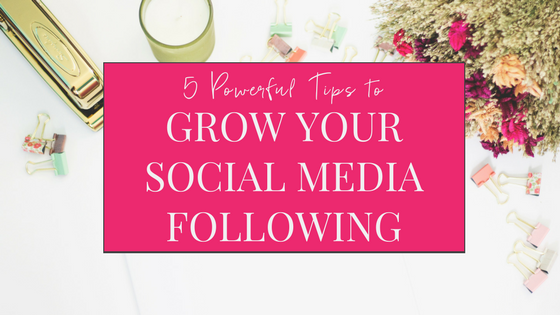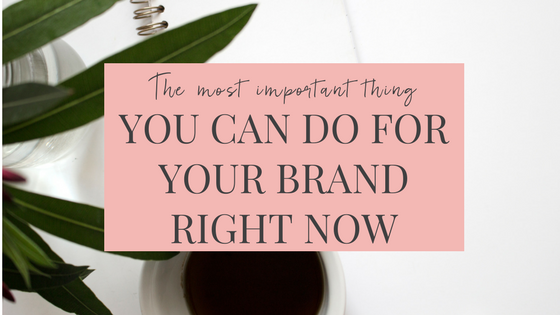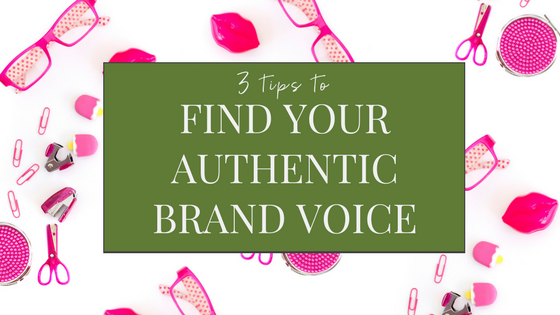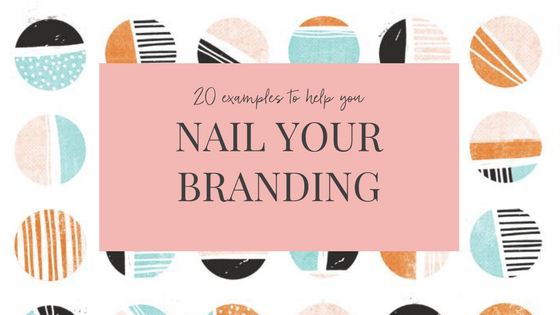
This post is going to take you through 5 tips to grow your brand’s social media following stat.
What does it take for a girl to get some attention around here??
On social media that is.
You post and you post and you post. And all for what? Crickets. Sometimes you feel like screaming “Is anybody out there? Is ANYONE listening? Does anybody care??
Girl we have ALL been there.
Somewhere between MySpace and Snapchat it seems social media has become a sport. One where we’ve all signed up to pour out our blood, sweat, and tears in order to “win” a few likes, comments, and followers.
Is the stress and effort really worth all that?
No… and yes.
No to the stress. Because most of us are posting pretty pictures and witty Tweets. This shouldn’t be cause for an aneurysm.
But Yes to the effort. There’s no place better than social media to cultivate and grow your community. You can reach people all over the world from the comfort of your couch while making connections you would never otherwise have made. It’s a beautiful thing, really.
So how do we cut the stress and focus our efforts in order to get the results and grow the social media following we all crave? That’s what we’re diving into in this post. Go ahead and download your free tip sheet here.
Ready? Let’s hit it.
Prioritize
Trying to be everywhere all of the time can be enough to drive you crazy! And the truth is, it’s just not necessary . Not to mention, it’s not the best use of your time.
Here’s why.
First of all, there’s a heck of a lot of people on social media. 2.8 billion to be exact. That’s one out of every 3 people in the world!. Woah.
However, we know that not all of these people are potential customers. Is your brand only for women? Boom. There goes 50% of that 2.8 million right there.
The point is, we don’t need to reach everybody. We only need to worry about reaching our target audience. We also know that not everyone is spending their time online in the same way. So go ahead, breathe that sigh of relief. Instead of spreading yourself thin, focus on growing the 1 – 2 channels that are most important to your target customers.
If you haven’t figured that out quite yet, stop here and read this post. It will teach you how to figure out who your customers are plus there is a free customer persona template which will come in handy.
If you’ve made it that far and still have questions about where you should focus your energy check out this infographic from Social Media today. It will show you the stats on the average users across the most popular platforms.

The second reason that focusing your efforts is important is because growth doesn’t come without effort. This isn’t a set it and forget it kind of game. It’s a roll up your sleeves and get all in kind of commitment. Which leads us to tip # 2.
Be consistent
Our friend Brittney said it best- you want it, you gotta work. Tip #1 was all about finding the party and making sure we show up to it. But showing up once isn’t enough to be memorable. We need to show up every time.
Those of us who consider Millennials to be our target (and really, don’t most of us?) need to be especially prudent in our efforts. Millennials are hit with more than 5,000 Marketing messages a day. That’s a new message about every 20 seconds. That’s so much contact that most of us aren’t even aware that it’s happening.
Catch that? We tune out most messages that fly our way. We have to. What does that mean for your brand? Well, if you aren’t reaching out to your customers on the reg, you’re going to get lost in the social shuffle.
There is no easy way around it. When you’re ready to get serious about growing your social media following you need to be prepared to post consistently.
And just how often is often enough? Well this infographic from Co-Schedule breaks it all down.

They also share a case study that cites one bran growing their Facebook reach by 69% just by increasing how frequently they posted.
As an added benefit, posting everyday will create a deeper sense of loyalty from your customers. That means they’re more likely to keep buying from you than bail for another brand.
I have a feeling your next question is, what should I be posting? Which brings us to Tip #3.
Post original content
Much of what gets shared across our social channels is content that is reposted and repurposed. Meaning, one person created it and then someone shared it. Then someone else shared it. Until finally through enough sharing it ended up in your feed.
Guess who’s benefitting from all of those shares? It’s the person who originally created and posted that piece of content. Every time their original work is passed along, they get their brand in front of more people. And if the content is worth sharing then it’s likely going to entice people to click through and check out the person or brand who created it.
Wouldn’t you like to be that to be you?
There is an art & science to finding the perfect mix of original vs. curated content to post on social media. While, it seems everyone has their own point of view they all agree on one thing. Part of that mix should include high quality original content.
Not only does high quality content get shared which gives your brand more exposure, it also increases consumer trust and purchases.

And, trust in a brand’s content is 3x more important to consumers making purchase decisions than trust in their employees. (Source)
What do I mean by “original content”? It can be anything – pictures, graphics, videos, infographics, you name it. There are two route here. First, share the long form content you create (blog posts, e-books, guides) in short snackable sound bites. For instance, pulling out a quote or stat and turning it into a graphic. Second, you can reimagine soPmeone else’s content and create something original. Take for example a trending story that you turn into a video or an infographic you create from an interesting new study.
And if you think you’re not the creative type, you don’t get to pull that excuse. Tools like Canva and a brand book make it easier than ever to fake your graphic design genius.
Let’s go back to that sharing bit. Don’t expect it to happen without a little push. If you’ve gone through the effort to create the content, you want to make sure it get seen. And this brings us to Tip #4.
Engage
The work doesn’t end when you hit send. When you publish a post to social media you want to give it a little push to make sure it gets noticed.
Take Facebook. 75% of your post’s engagement will happens within the first 5 hours . And, on Instagram, it’s well known that gaining likes and comments quickly will help get your post filtered into more followers’ feeds.
All of this to say that you only have a short window of time to draw attention to your post so you want to do whatever you can to make the most of it.
There are several popularized tricks to help do this like tagging people, using hashtags, publishing at the right times. But at the end of the day, the one that works that blows them all out of the water is to follow ‘The Golden Rule’. That is to say, treat others like you want to be treated.
Identify 10 -20 influencers and/or brands in your niche. Follow them on the platforms where you have chosen to focus your efforts. Then make sure you are alerted of new posts by:
- Twitter: adding these brands to a list.
- Instagram: turning on notifications.
- Facebook: adding the brand pages to your shortcuts menu
You want to dish out likes and thoughtful comments to this group on the daily. The aim here is three-fold. First, you’re vying to capture their attention with the hope that they will show you some love back. Second, you want to capture the attention of everyone else who is liking and commenting on their content so that they’re intrigued enough to check you out. And third, you’re building up currency to reach out and ask for a collaboration where they give you a shoutout.
Social media is about building relationships and community. The more people you can pull into your network the faster you will grow your social media following.
So let’s talk about collaboration.
Collaborate
Growing your brand’s social media followers doesn’t have to be a one woman mission. Actually, you’ll have a lot more fun and success if you get help. And the kind of help I’m talking about is collaborations.
Partner up with other business owners and influencers and help one another out! By working together you can grow your reach by introducing each to the other’s audience. It’s also good for you.
Something as simple as tagging another user in your post has shown to increase your posts’ engagement rate by 56%. Now how is that for easy?
Beyond shoutouts you can join forces to co-create original content, hosts contests, and giveaways. The real trick to making this work is to find partners who share a similar audience. They should be interested to learn more about you and what you have to offer.
If you’re not sure where to find these partners a great place to look is on Facebook groups – for instance the Toast Meets Jam Fam page. Here you can find others who are in your same boat and looking to pair up.

In Conclusion
Social media can be an incredible way to grow your brand. And while there’s a lot that goes into building up your social media following, the real secret is to work smarter not harder.
What tips do you have to share? Leave them in a comment below!
















































